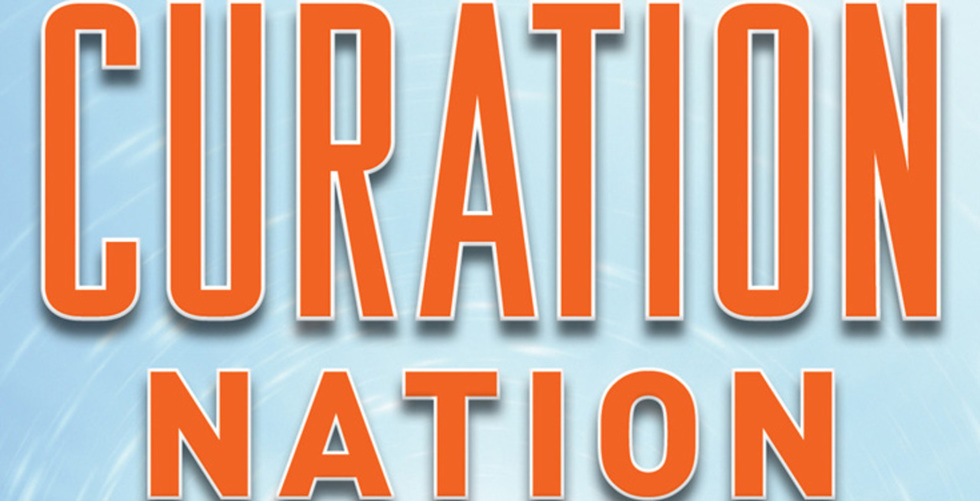
BY STEVEN ROSENBAUM |
Filmmaking, Festivals, And Filtering The Flood
Author and filmmaker Steven Rosenbaum explains how curation can make film distribution make sense.

It used to be that there were all kinds of speed bumps between a hopeful filmmaker and a finished film. Film stock was expensive. Cameras were expensive. And of course, distribution was limited, precious, and costly.
 Now - all those barriers are distant memories, and virtually anyone who thinks they want to be a filmmaker can make a film. Is it a good film? Or more importantly, one you want to watch? The future of film can be found in curation - a new way to mix a professional point of view with the wisdom of your friends, neighbors and trusted sources.
Now - all those barriers are distant memories, and virtually anyone who thinks they want to be a filmmaker can make a film. Is it a good film? Or more importantly, one you want to watch? The future of film can be found in curation - a new way to mix a professional point of view with the wisdom of your friends, neighbors and trusted sources.
What is Curation? Why does it matter?
Because content creation is going to continue to grow exponentially - film audiences are going to need to find new ways to filter the deluge of new content, and new ways to find and filter have the potential to create new audiences and new economics.
Flash forward five years, and imagine a whole new way films are made, distributed, discovered, and paid for:
Even as the gear that makes films becomes less expensive and the quality improves, filmmaking still won't be free. Professionals will need to be paid. Crews, actors, and expendables are still costly. But audiences will have an opportunity to support filmmakers, and topics, as the process of micro-finance continues to grow. Sites like Kickstarter are putting filmmakers directly in touch with audiences, creating a one on one relationship with a future audience who can vote with their credit cards with commitments that are often little more than the cost of a DVD.
Audiences are turning their formerly passive role into active curators, filtering proposals based on topic, or the filmmaker's previous work - and turning the ideas into actual funded projects.
There's good news/bad news in this. Because the volume of finished films swamps the former gating factors of studios, theatre screens, and critics, there's no stopping any film - good or bad - from being made.
But what emerges is the increased importance of festivals, and of peer recommendations and social search.
Here's a personal example. Back in 1999, a friend of mine insisted I go see a film. He bugged me endlessly. And so, without so much as reading a review or even knowing what it was about, I agreed. 90 minutes later, I was a fan - having seen Chris Smith's American Movie. The film ended with a URL - and I was such a fan that I logged on that night, and bought Coven, the horror film sequel to American Movie. I have a signed poster on my wall.
Once films - and Directors - have fans, the whole way distribution works changes forever.
Of course, the web creates a complex problem for both filmmakers and festivals. Festivals historically want to see films first, and any web distribution often voids a festival submission. At the same time, posting films, or scenes, or even rough cuts is a powerful way for a film to build buzz, fans, and even useful pre-distribution feedback.
Festivals are going to need to re-think how they allow for and harness web distribution, and consumer curators to help them find and embrace emerging new work. Social proof can be a powerful tool for discovery, if it is considered in context.
On the exhibition front, Tribeca has embraced a unique (and I think ultimately successful, model of streaming festival films on the web) - free, but to a limited number of 'seats.' This creates demand, rather than simply offering streaming for free to an unlimited number of viewers. The folks who get the limited number of free spots know they're seeing something early, before wide release, which gives them the motivation to be evangelists and influencers for the films that the enjoy.
So, once a film makes its way through a festival screening process and is deemed of good quality by the festival programmers, then the power of the web kicks in with Facebook and Twitter giving tools to broadcast an endorsement and spread the word. There's no doubt that the arrival of limitless bandwidth and unlimited distribution will be a challenge for the so called “blockbuster” films that count on huge audiences and day and date wide release. But for festival fare, both fiction and non-fiction, small audiences that build buzz and critical endorsement can create the kind of momentum that can really build.
Curation is the magic combination of technology and human review and endorsement that looks to be the light at the end of the tunnel for independent creators. Creating work that activates a passionate fan base and the curatorial instinct can turn on a powerful ad-hoc social network of support that builds, not just for the film but the filmmaker as well.